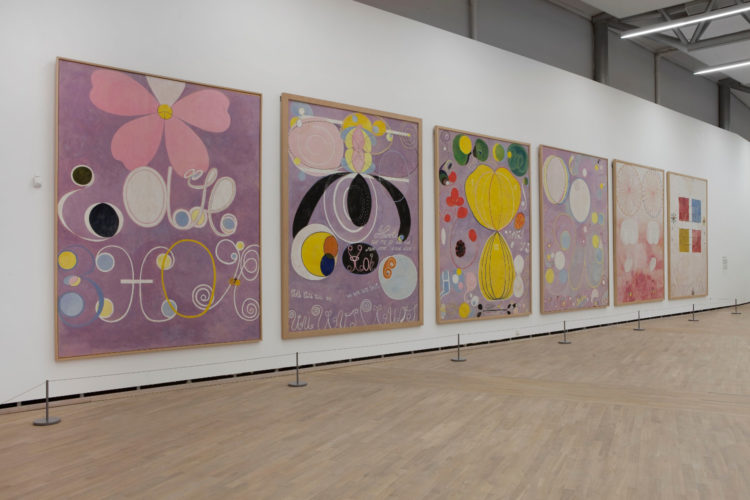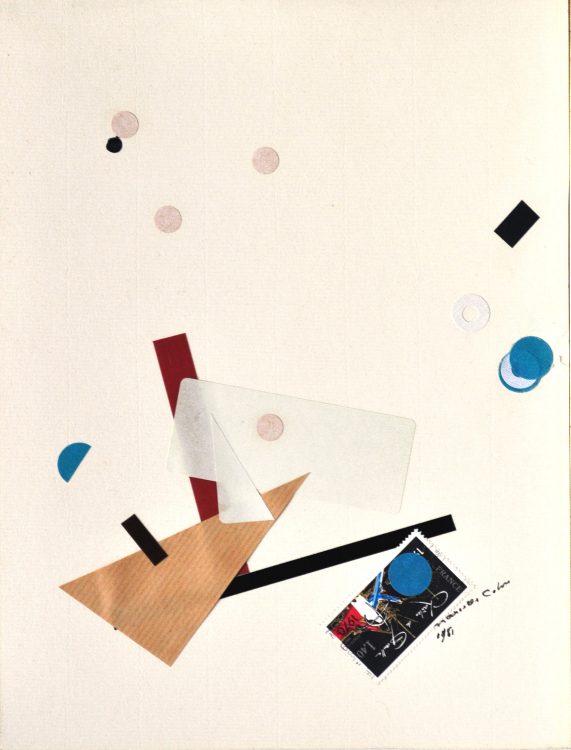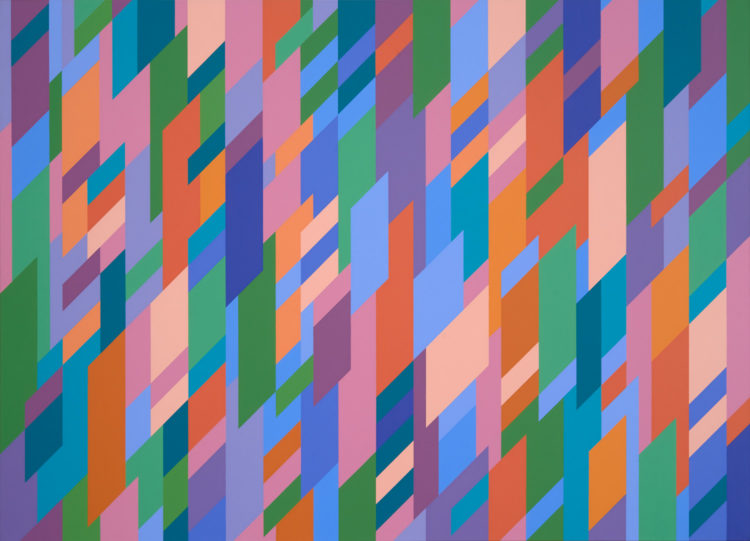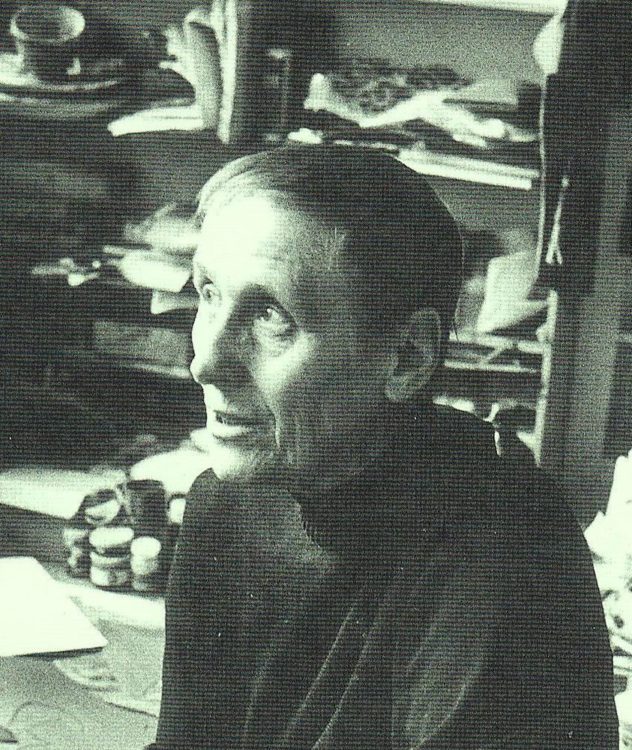Huguette Arthur Bertrand
Patrick Gilles Persin, Huguette Arthur Bertrand, Paris, Galerie Diane de Polignac, 2012
→Paul Bernard-Nouraud, Huguette Arthur Bertrand, Paris, Galerie Convergences, 2021
→
Michel Ragon, Huguette Arthur Bertrand, Paris, Éditions Porte du Sud/Galarté, 1987
Huguette Arthur Bertrand, Paris, Galerie Convergences, 4 – 26 September 2021
→Huguette Arthur Bertrand : La peinture exaltée. Peintures et collages des années 1960, Galerie Diane de Polignac, Paris, 10 September – 6 October 2020
→Femmes années 50. Au fil de l’abstraction, peinture et sculpture, Musée Soulages, Rodez, 14 December 2019 – 10 May 2020
French painter.
Born in the town of Écouen (Val-d’Oise), where her civil servant father was working at the time, Huguette Arthur Bertrand’s family came from the south of France and Saint-Etienne. She grew up in Roanne (Loire) where she attended primary and secondary school. We have little information about her early artistic inclinations, though we do know that that she was a medalwinner at the Concours Général de Dessin in 1936 and 1937, and some early figurative works survive from 1942. In 1945 she settled in Paris and began studying at the École des Beaux-Arts. There she met Oscar Gauthier (1921–2009), who would later remember H. Arthur Bertrand with joy, recalling her sense of humour and the moments of hilarity they shared. The artist also enrolled at the Académie de la Grande Chaumière. She left for Prague on a study scholarship in the autumn of 1947, where she encountered the painter Joseph Sima (1891–1971) and staged her first solo exhibition.
Upon her return to France, H. Arthur Bertrand quickly distinguished herself as one of the early flagbearers of abstract art, part of a group known as the Nouvelle École de Paris. She presented work in the two Les Mains éblouies exhibitions curated by Michel Ragon at the Galerie Maeght, and her works appeared at the Salon de Mai, an event to which she would often return in subsequent years. She had definitively distanced herself from figuration, and though she was influenced by the work of the elder Hans Hartung (1904–1989), her paintings very soon proved undeniably original.
“What I want to achieve is to divide space and at the same time recreate it, to render it contradictorily fragmented and in motion, through a linear process that rips up form without denying it,” she declared in terms quoted by Michel Seuphor (1901–1999) in his 1957 Dictionnaire de la peinture abstraite. Evidently, H. Arthur Bertrand was recognised as one of the major painters of her generation. In the meantime she had joined the Galerie Arnaud, champion of the greatest abstract artists: its founder, Jean-Robert Arnaud, started the revue Cimaise, and H. Arthur Bertrand’s work featured on its front cover a number of times. She also met critics Charles Estienne, Roger van Gindertael and Herta Wescher. In 1955 she was awarded the prestigious Prix Fénéon, which drew international acclaim and led to exhibitions in Copenhagen, Havana, Brussels and New York.
During the 1950s, the artist’s work began to display a clarified aesthetic, featuring networks of lines running in parallel then shattered by singular gestures that grew less and less geometric and more and more dynamic; impulses became freer in tones of ochre, blue and red, all held up by searing blacks. H. Arthur Bertrand made a move towards collage, composing a number of works and developing her technique. She also took up engraving, practicing partly at the notable Parisian atelier Lacourière. Over the following years, the black fissures and traces in her paintings retreated, and in their place arose marks dominated by the colour orange; her work thus gained a fluidity, a transparency, a gentler sense of poetry.
H. Arthur Bertrand had grown up around the textile industry in Roanne, and fabric emerges often in her collages. Perhaps those early years were the source of her experimentations in tapestry: she practised in the medium intensely during the 1970s, working with several weavers in Aubusson and at Atelier 3. Her approach retained a sense of freedom, as she worked without a pre-established cartoon, with small gouache paintings her only guide. This was a particularly fruitful period of her career that led to a number of public commissions.
H. Arthur Bertrand died in Paris in 2005. Today, her works can be found in numerous museums in France and abroad.




 Huguette Arthur Bertrand | Encyclopédie audiovisuelle de l’art contemporain, June 2021
Huguette Arthur Bertrand | Encyclopédie audiovisuelle de l’art contemporain, June 2021  Huguette Arthur Bertrand : La peinture exaltée. Peintures et collages des années 1960 | Galerie Diane de Polignac, Setpember 2020
Huguette Arthur Bertrand : La peinture exaltée. Peintures et collages des années 1960 | Galerie Diane de Polignac, Setpember 2020 















































